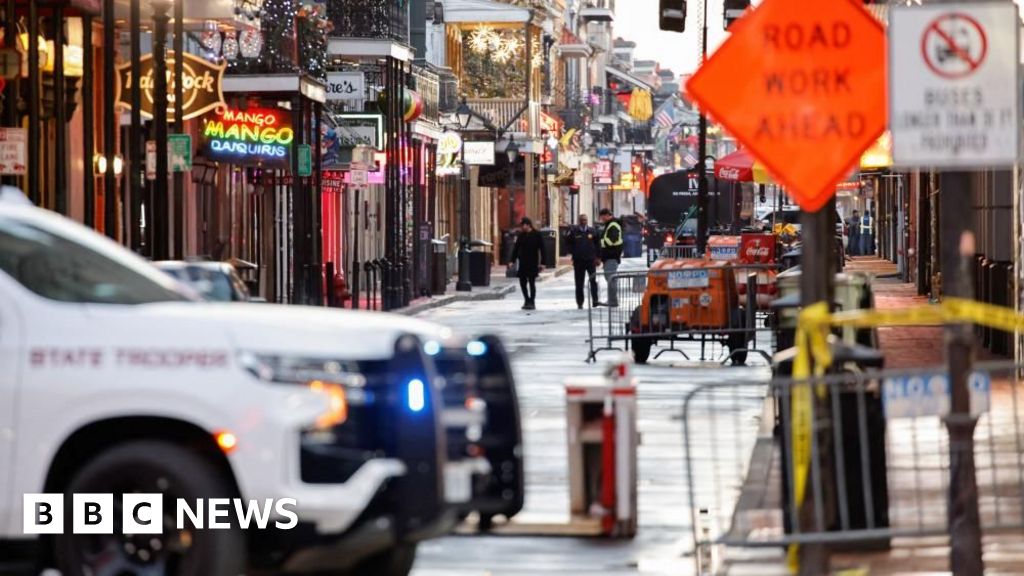Physical Address
304 North Cardinal St.
Dorchester Center, MA 02124
Physical Address
304 North Cardinal St.
Dorchester Center, MA 02124

Security posts, known as bollards, were not in place before a suspect drove a truck into a crowd in New Orleans’ French Quarter early on New Year’s Day, killing 14 and injuring at least 35 others.
Louisiana officials said street barriers are down and repairs are being made before the city hosts the NFL Super Bowl on Feb. 9.
Short and sturdy bollards – made of concrete, metal or other materials – are designed to block cars from entering pedestrian areas.
Christopher Raya, deputy assistant director of the FBI, called the attack an act of terrorism on Thursday.
Early on New Year’s morning, a police car was parked at an intersection to block access to Bourbon Street in the French Quarter, where the attack took place, but the suspect drove around the car and onto the sidewalk, police said.
Police have named Shamsud-Din Jabbar, a 42-year-old Texas resident and US Army veteran, as the suspect. He died in the attack.
New Orleans Police Chief Ann Kirkpatrick said Wednesday that police were “aware of the bollard situation” and had taken steps to “reinforce those targeted areas.”
“We did have a plan, but the terrorists defeated it,” she said.
Ms. Kirkpatrick said the city plans to take a number of measures to increase security at the Sugar Bowl, which was postponed from Wednesday to Thursday afternoon because of the attack.
Bourbon Street will reopen Thursday shortly before the game.
“We have reinforced the area,” Louisiana Gov. Jeff Landry said Thursday.
New Orleans began placing bollards on Bourbon Street more than a decade ago, Mayor LaToya Cantrell said Wednesday.
But, she added, the bollards started malfunctioning because of the Mardi Gras beads, leading officials to try to replace them before the Super Bowl, which is set to take place at the Caesars Superdome, near the site of the attack.
At the press conference, Ms. Kirkpatrick defended other security measures that have been put in place in the city.
“We had a car there, barriers were there, officers were there, and they still got around,” she said.
A number of cities in the US and around the world have installed bollards to prevent attacks.
New York City implemented safety measures along the Hudson River Park bike path after a man drove a rented pickup truck into cyclists and joggers on the path in 2017, killing eight people.
It’s too hard to say for sure whether the New Orleans bollards that were in place would have prevented a similar incident, said University of Michigan professor and counterterrorism expert Javed Ali.
“He had a Ford 150 pickup truck. You’re going 50 to 60 miles an hour with that thing, and who knows, even with the bollards in place, if the car would still – through physics – ram them?” he said.
“Probably lucky,” added Mr Ali. “Unfortunately, that’s what happens in these types of attacks.”
A 2017 report commissioned by the city of New Orleans found the French Quarter to be a “risk and target area for terrorism, which the FBI has identified as a problem the city must address.”
The report notes that the neighborhood “is often densely packed with pedestrians and represents a potential mass casualty zone.”